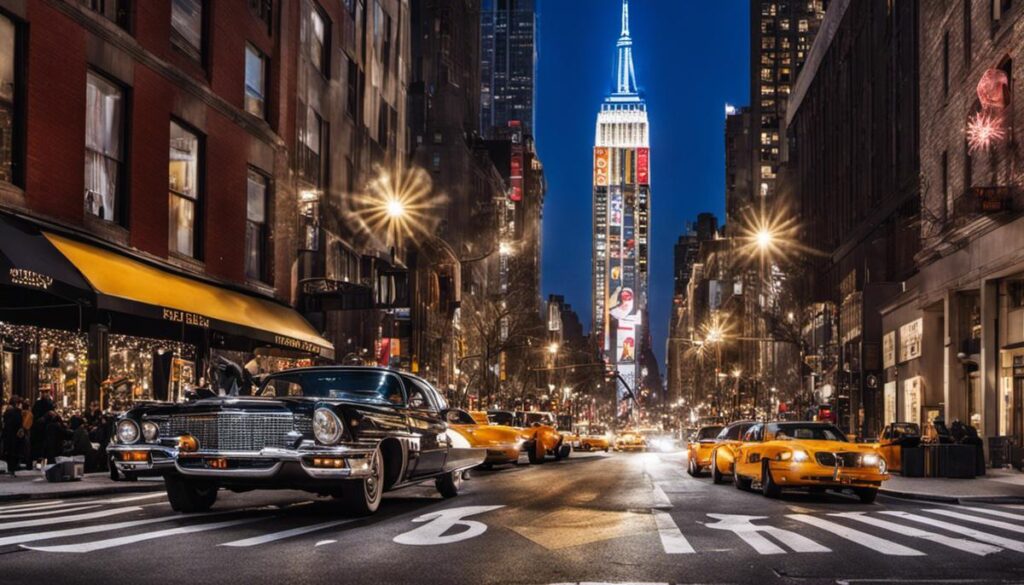Embracing an extensive and rich historical past, Binghamton, New York is more than just a town; it’s a vivid timeline woven into the tapestry of America’s past. Within this story, some narratives offer unique glimpses of this timeline, and one such story is that of Burt and his treasured Burt’s Portraits. These portraits not only depict the faces of the town’s residents but also encapsulate the shifts in societal norms and cultural attitudes through different epochs. Burt’s Portraits are thus, a visual exploration of Binghamton’s history, presenting an unparalleled glimpse into the town’s evolution, and its sociocultural metamorphosis.
Origins of Binghamton, New York
The Conjuncture of Elements: Formation and Development of Binghamton, New York
In the field of Social Geographic Information, the formation and development of urban centers invariably stimulate intrigue due to the amalgamation of diverse factors influencing such processes. Notably, Binghamton, New York stands as a quintessential paradigm for scholars seeking to apprehend the myriad influences on urban growth. Located at the confluence of Susquehanna and Chenango Rivers in Broome County, the city’s historical fabrication and progress can be ascribed to essential factors such as advantageous geographical positioning, industrial evolution, and crucial railway developments.
Emanating as a modest lumbering and agricultural community in the early 19th century, Binghamton’s position between rivers proved pivotal for its early growth. This location, indeed, promoted seamless transportation of goods and people, converging with the city’s growing reputation as a center for trade. Further, rich alluvial soils lining the riversides provided a fertile bed for robust agricultural activities, the backbone of any budding economy.
As the Industrial Revolution pervaded the nation, Binghamton was not an exception. Moving from a rural to an industrial economy during the 1830s, Binghamton witnessed the sprouting of numerous manufacturing industries— most markedly, the cigar manufacturing industry. By the late 19th century, Binghamton was dubbed “The Parlor City” due to the prosperity from these industries: not only did they stimulate economic growth but also attracted a significant workforce, equally contributing to the city’s burgeoning populace.
The nexus between urban development and transportation is undisputed, as demonstrated by Binghamton’s railway history. With its first railway line, the Erie Railroad, opening in 1848, further lines soon followed, such as the Delaware, Lackawanna, and Western Railroad, and the Delaware & Hudson. These developments bolstered Binghamton’s accessibility, enhancing its appeal as a commercial hub and reinforcing links to additional markets.
In summation, the nuanced overview of Binghamton, New York, underlines the city’s formation and growth as outcomes of converging elements. The unique intersection of geographical location, industrial transformation, and transportation channels has painted a multi-faceted portrait of this urban entity. The ongoing exploration of this subject serves as a tribute to the ceaseless scientific curiosity vested in unraveling city development stories across the globe.

Picturing Binghamton: A look into Burt’s Portraits
Entitled “Portraits of Growth: Burt’s Binghamton Illustrated”, let us journey together through the nuanced documentation by the eminent urban photographer, Burt, of the historical Binghamton’s evolution. Burt, renowned for his keen eye and meticulous detail, presents a comprehensive perspective on the transformation of Binghamton as captured in his remarkable portraits.
In Burt’s photographs, the distinctive character of Binghamton’s built environment emerges as a vibrant narrative leitmotif. One discerns how early architectural styles, encapsulating the stylistic influences of the late 19th and early 20th century, contributed to the cityscape’s visual identity. Colonial Revivals, Queen Anne, and Italianate structures speak to an era when Binghamton was evolving into an independent, self-reliant urban center, harboring aspirations beyond its initial agrarian character.
Burt’s portraits further highlight the transformation of domestic life within Binghamton. Photographs of residential facades and interiors record the shift from unpacked log and plank houses to brick and stucco dwellings, mirroring the city’s socioeconomic evolution. In some images, we catch glimpses of fashionable cast-iron vernacular architecture, indicating the rapid ascension of middle-class households during the economic prosperity of the late 19th century.
Perhaps the most captivating facet of Burt’s narrative is the portrayal of Binghamton’s citizens; their cumulative stories become the elusive ‘soul’ of this urban evolution. The portraits reveal a wide array of social classes, professions, and ethnic backgrounds. This may have been Burt’s attempt at demonstrating that the true driving force of urban evolution is not architecture or industry, but human capital. After all, cities are borne and nourished by the hard work, enterprise, and dreams of their inhabitants.
Burt also documented the metamorphosis of Binghamton’s public spaces through his lens. The turn of the 20th century marked a significant shift in urban planning beliefs, shifting importance to areas for communal gathering and recreational purposes. Twining streets and the deliberate creation of green pockets authenticate the planners’ objective to foster community cohesion and improve urban living standards.
Moreover, Burt’s depiction of the city’s industrial architecture presents a potent visual chronicle of the epochal transitions in Binghamton’s economy. Disused factory sites, a byproduct of the decline of large-scale manufacturing post-Industrial Revolution, are depicted alongside revitalized architecture, marking the city’s reincarnation into a center for technological innovation and service industries. These images narrate an industrial dynamism that is vital to acknowledging Binghamton’s economic resilience and adaptability.
All told, Burt’s portraits provide an invaluable window into Binghamton’s urban evolution, painted in striking detail with the town’s architectural, home-life, civic, and industrial growth. Each frame is an echo of a bygone day, a silent testament to the city’s life, its struggles, and triumphs. These vivid snapshots from different epochs continue to nourish our collective memory, reminding us that every city is a living entity—forever bearing imprints of its past, even as it unabashedly strides into the future.
Binghamton as seen through Burt’s Portraits: A Comparative study
Examining Binghamton through Burt’s lens, as viewed across the dimensions of time, extends our insight into the socio-cultural fabric of the city. His timeless snapshots present a socio-historical chronicle that delves into the epicenter of Binghamton’s society.
Tracing the evolution of Binghamton’s architectural styles is an enlightening exploit. Burt’s early portrayals highlight prominent Victorian motifs that dominated the 19th-century urban landscape. Elements such as adorned cornices, marble columns, and large bay windows displaying classic tastes, spotlighted the city’s economic affluence. The evolution into 20th century saw an influx of modernist design elements such as symmetrical facades and unembellished surface designs, reflecting shifts in cultural attitudes and socio-economic trends.
Shifting the focus from the public to private sphere adds another layer to understanding the transformation of Binghamton. Burt’s candid pictures of domestic life subtly showcase the metamorphosis of societal norms. The division between the home and the workplace during the 19th century gradually transitioned into the blurred boundaries of modern work-from-home lifestyle that we observe today, underlining complexities in societal absorption of technological advances.
Moreover, the diverse backgrounds of Binghamton’s denizens echo the city’s vibrant multiculturalism; a melting pot of varied ethnicities, cultures, and societal stratifications. These images underscore the social dynamics from distinct periods, from the hardworking industrial laborer to the enterprising technocrat, revealing the quintessence of Binghamton’s society.
Urban planning’s ideologies transitioned from minimalistic public spaces to creations that recognized the value of social engagement zones for community bonding. The transformation from the solitude of Washington Street Bridge to the bustling Otsiningo Park reflects this shift, enhancing the city’s sense of community.
Burt’s images chronicle the transition of Binghamton’s industrial architectural styles, signifying changing economic adaptations throughout time. The shift from heavy industries to tech-based giants like IBM documented through Burt’s lens portrays the city’s resilient response to changing economic factors and technological advancements.
Conclusively, Binghamton’s urban evolution, juxtaposing past against present depicted through Burt’s photographs, provides a refreshing historical prism for evaluating the city’s trajectory. Binghamton’s resilient adaptation to change and flourishment through the multifaceted aspects of society, economy, and culture reveal an undying spirit, shaping the city’s past, present, and future.

Impact and Significance of Burt’s Portraits
Complimentary to the foundational history and development of Binghamton, New York, is the significance of the artistic realm, particularly through the Portraits by Burt. These works wielded substantial influence over the historic and cultural depiction of the city. This article sheds light on this under-explored stratum of Binghamton’s legacy, focusing specifically on Burt’s Portraits, their implications on societal representation, and their potent influence on the city’s cultural trajectory.
Burt’s Portraits, in their precise and detailed representations, captured the evolving ethos and aesthetic of Binghamton’s urban landscape, bearing witness to the cities distinctive cultural shifts over time. These works of art didn’t merely replicate reality; they shaped it, molding the collective image and understanding of Binghamton, its heritage, and its people.
Looking at these visual archives, one can glean invaluable insights into the city’s changing societal norms. Burt’s Portraits vividly portrayed the blurring boundaries between the professional and domestic spheres, reflecting broader transitions towards industrialization and societal adaptation to new work-life realities.
A testament to the city’s multicultural fabric, the subjects of Burt’s Portraits were chosen not just from well-established Americans but also represented newly-decamped immigrants, effectively highlighting the heterogeneity of Binghamton’s populace. This artistic testament to Binghamton’s multicultural heritage counteracts monolithic narratives, displaying the city’s diverse identity in its full richness and complexity.
In the realm of city planning, Burt’s Portraits mirrored significant shifts in ideologies. Gone were the days of inaccessible grandeur; the community-centric ethos distinctly evident, emphasizing a profound departure towards creating spaces for collective engagement and bonds that strengthen communities.
Providing a visual dissertation on Binghamton’s architectural evolution, Burt’s Portraits expertly traced the transition of industrial architectural styles. The city’s magnificent warehouses, factories, and residential buildings came alive through their intricate portrayal in these works, echoing the economic developments and transformations over the years.
Through the lens of Burt’s Portrices, the resilience of Binghamton in adapting to societal and economic transitions is symbolically represented. The subjects’ expressions, the portrayed buildings, and the nuanced details hidden in each painting offer an artistic ledger for Binghamton’s growth, adaptation, and flourishing despite the vicissitudes of time and change.
In essence, Burt’s Portraits are more than just works of art; they are historical narrators that eloquently capture the soul of Binghamton. They are visual manifestations of the city’s spirit, offering crucial insights into its growth and resilience. Their influence on Binghamton’s historical and cultural representations remains unmatched, as they continue to enrich our understanding of this unique urban fabric.
In this context, approaching Binghamton’s multifaceted trajectory through the prism of Burt’s Portraits is paramount, as they provide an integral dimension to our understanding of its vibrant history, cultural diversity, economic resilience, and societal evolution. Through their enduring aesthetic appeal and timeless relevance, Burt’s Portraits offer a vibrant tapestry that continues to shape and inform Binghamton’s historical and cultural narrative.

Reflecting on the journey of Binghamton through the lens of Burt’s Portraits, one can’t help but appreciate the impact of these valuable artistic works. It is through this visual chronicle that Burt has bestowed a unique gift to Binghamton, fuelling a deeper appreciation for its past, engendering an understanding of its present, and immortalizing the town’s unwritten future. As we turn the pages of Binghamton’s history, Burt’s Portraits continue to be the vibrant inclusions, bearing testament to the town’s evolving identity and contributing to its rich cultural heritage.



